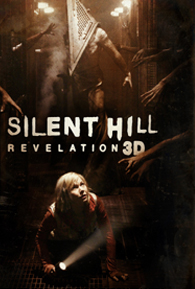
Witness Silent Hill, the 2006 film by Christophe Gans which got it right: at its best, the Silent Hill franchise is not the horror and gore, and least of all the thrills. It's all about psychological horror. Our besieged protagonists aren't trapped in a town run by cultists plotting to awaken some dark elder gods. They're trapped in a spiritual purgatory of their own making.Our besieged protagonists aren't fighting eldritch horrors. They're fighting against the projection their own personal demons and guilts.
In Silent Hill: Revelation, one almost gets an impression there's a need to compensate on film how far ahead the video game franchise has moved. While the story continues the efforts of Heather (Adelaide Clemens) and Christopher (Sean Bean) to escape the long reach of the evil cultists of Silent Hill, the monsters and locations they encounter when the duo do finally find themselves in the town are often sourced from other than the Silent Hill 3 game, and feel chosen for how horrifying or bizarre they look, rather than how they tie in to the inner fears and guilt of our protagonists.
That's not to say that Silent Hill: Revelation is a glorious spectacle designed just for fans of the series. Before Heather gets bogged down in endless exposition and mythology from helpful side characters (notably played by Kit Harington and Malcolm McDowell) which lead her into the cursed town, the film's too-short first act features several sequences where Heather experiences vivid, horrific hallucinations when the Silent Hill's Otherworld overlaps with reality. In a trippy sequence in a shopping mall, she isn't exactly chased by eldritch abominations that are recognisable as manifestations of her fears and guilt but what she sees are as frightening and mind-blowing as what Rowdy Roddy Piper saw when he put on those sunglasses in John Carpenter's They Live. The sheer craziness and lopsided social commentary in that scene alone is why I'd still watch Silent Hill: Revelations all over again.












 打印版本
打印版本


















读者回应
抢先发表第一个回应吧!
请先登入再使用此功能。